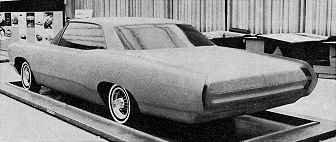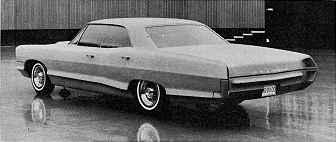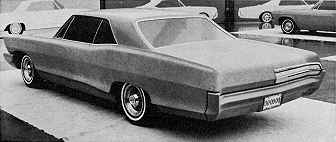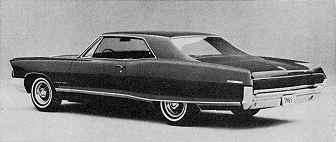The most important tool in evaluating a design is the full-sized clay model. A sketch or rendering is useful only to a point; then an idea has to be seen in three dimensions and full size. The front, rear, roof, sides, upper, and lower must blend into one integrated body shape.
Clay permits making big and small changes as the design develops. This work is done by highly skilled sculptor-modelers. After countless changes, the design is finally smoothed to an extremely accurate surface. Actual dimensions and surface drawings for the production car are taken directly from this clay model.
At the same time, in the interior studios, similar processes go on in designing the seating, instrument panels, placement of controls, interior trim, and choice of materials and colors. Noteworthy here is the contribution of qualified women designers, who are a part of the design teams.
The final step in the design evaluation is the fiberglass model, built in the fabrication shops and finished in every exterior and interior detail. These are made from plaster molds taken from the clay model. Even at close range, these prototype models can't be distinguished from a real car. This model may even be powered by an electric motor so it can be seen as a moving car.
Meetings, showings, discussions, modifications, and refinements go with every step of the process. Attention shifts from development of overall themes to perfection of the most minute details. Production and engineering specialists as well as other Pontiac, Styling, and GM executives come to the studios regularly to review design progress. Finally, more than a year before introduction, the fiberglass prototypes get approval from division and corporate management.
In August, 1963, the 1965 models were shown to the GM board of directors for final approval. Production changes could have been made as long as six months after this final showing, but then the tooling process had to begin.
Actually, the design process never ends. As the 1965s were introduced last fall, the 1966 models had already been approved by the board of directors. Design work was well along on the 1967s, and early consideration was being given the 1968s.
For the future, Mitchell, Estes, DeLorean, and Humbert expect tremendous advances in cars. This arises from today's tremendous rate of progress in engineering and technology. There'll be new materials, new production methods, and new concepts in vehicles and systems, all influencing tomorrow's automobiles. All of which promises that the Pontiacs of the future will continue to have plenty of new and exciting design innovations to offer the public. And they'll probably be here sooner than you think.
/MT
|

The same sort of styling evolution took place on rear end of the 1965 Grand Prix. A clay model of stylists' first attempts reflected general lines of the 1964 Pontiacs. |

By December, 1962, the 1965s looked like this. Olds influence is evident in tail lights—no great surprise, because all GM cars emanate from one central styling studio. |

By mid-1963, stylists had resolved roof line and bumper, but still weren't sure about tail lights. This half-and-half choice gave management chance to see alternate plans. |

Again, fiberglass model looks identically like the finished car. With chrome trim in place and full interior, model may be powered by electric motor or by standard V-8.
|
|